
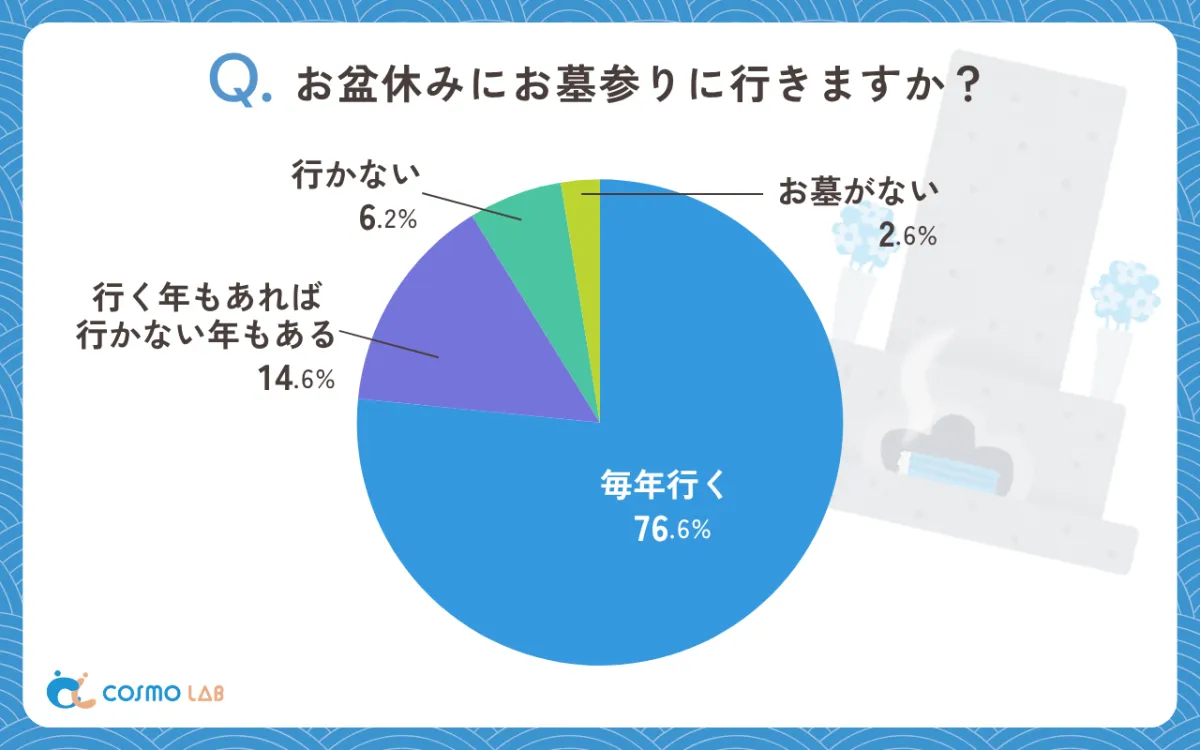
The Changing Perspectives of Seniors on Grave Maintenance and Burial Practices in Modern Japan
The Changing Perspectives of Seniors on Grave Maintenance
A recent survey conducted by Cosmo Health Co., Ltd. through its senior-focused marketing platform, Cosmo Lab, has unveiled profound insights into the evolving attitudes of Japan's senior citizens regarding traditional burial and grave maintenance. The findings indicate a notable shift in priorities and perspectives concerning how the elderly approach their end-of-life decisions, particularly in maintaining graves.
Key Findings from the Survey
Interest in Ending Grave Maintenance
The survey indicates that nearly 53.2% of seniors are contemplating “grave ending” practices, which refer to removing or relocating graves. This sentiment is driven largely by a desire to alleviate potential burdens on their children and grandchildren. Specifically, 40.6% expressed a wish to consider this option in the future, while 12.6% are currently taking it into consideration. This change showcases a proactive approach among seniors toward end-of-life planning, taking into account the future implications for their families.
Tradition of Grave Visits Remains Strong
Despite the shift in preferences regarding grave maintenance, traditional practices still hold substantial significance. An impressive 76.6% of respondents confirmed they visit graves annually during the Obon season, reflecting the continued importance of honoring ancestors and maintaining familial bonds through these visits. The act is seen not just as a ritual, but as a crucial moment to express gratitude to deceased loved ones, highlighting that the emotional and spiritual connections tied to these traditions remain intact.
Traditional Burial Practices Persists
Regarding their approaches to burial, many seniors still have a strong inclination towards traditional styles of commemoration. 21.9% indicated they would prefer to have their burial arrangements managed by family members, while 19.4% favored traditional graves. This trend emphasizes the comfort and security seniors find in familiar customs, where family involvement is a significant aspect of their peace of mind with regard to their posthumous arrangements. However, an inclination towards modern alternatives like “eternal care graves” is also emerging, catering to those seeking less hands-on management for their final resting place.
Concerns Over Grave Management
A noteworthy 75% of participants expressed varying levels of anxiety regarding future grave management, with 46.7% admitting they feel somewhat concerned, and 28.3% stating they are very worried. The underlying reasons often relate to changes in family dynamics, such as declining birth rates, urban migration, and an increase in nuclear families, which add layers of complexity to the maintenance and ownership of graves.
Succession of Graves
The survey found that 64.7% of respondents have someone designated to inherit their grave, while 22.3% acknowledge the need for heirs but lack successors. This indicates an awareness of the necessity for continuity in burial practices, although the responses also underline a growing acceptance of alternative arrangements, where some consider “non-inherited graves.”
Motivations Behind Considering Grave Ending
When asked why they contemplate grave ending, 45.0% cited the desire to avoid placing burdens on their relatives. Further, 22.7% believe that options such as columbariums and eternal care are better suited for contemporary life, while 19.2% mentioned lack of successors as a contributing factor. Interestingly, logistical challenges such as distance from burial sites also play a role, with 13.5% of seniors pointing this out.
Future Preferences for Commemoration
Among those surveyed, a significant percentage, 21.9%, intend to leave their commemoration up to their family. Traditional grave practices still retain robust support, although alternative approaches like “eternal care graves” and columbariums are gradually gaining traction, particularly among those aiming to ease family burdens during an already challenging time.
Interest in Support Services
While the survey revealed that 37.6% of seniors have little interest in services assisting with grave selection, a combined 36.5% expressed either moderate or strong interest. This indicates an opportunity for growth and education within the sector, as many seem uncertain about their options regarding grave management.
Conclusion
This research reveals a clear picture of the senior demographic’s values, demonstrating a strong respect for tradition while accommodating modern realities. With 76.6% consistently visiting graves, it is evident that the reverence for ancestors remains strong among seniors. Yet, the 75% expressing management concerns signals a transition where traditional practices may clash with contemporary societal changes. The majority considering grave ending underscores a thoughtful shift towards less burdensome options, framing end-of-life planning in a context that honors family, tradition, and evolving needs.
Ultimately, the insights gained from this research present not only a narrative of changing values within Japanese society but also highlight the importance of providing relevant support and information tailored to meet the needs of this demographic. Cosmo Lab continues to explore various themes relating to seniors, including health, consumer behavior, and cultural insights. These findings reinforce the need for a nuanced understanding of seniors’ perspectives in the face of evolving family structures and societal expectations.
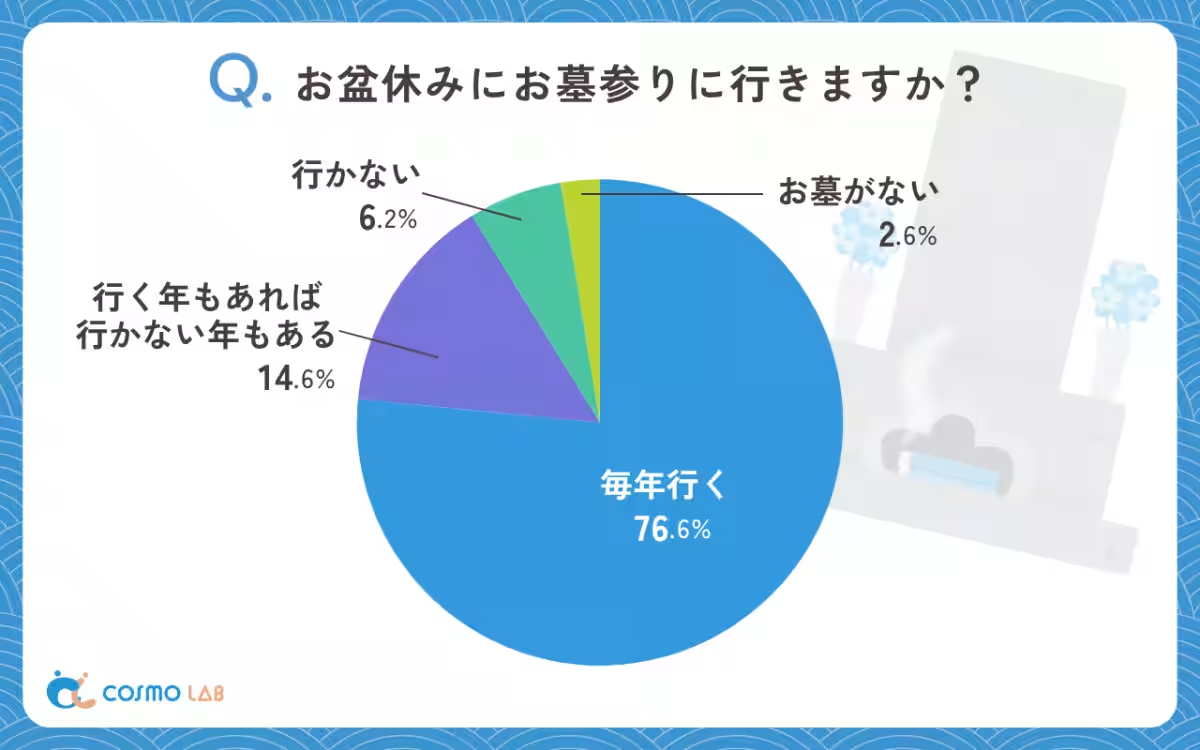
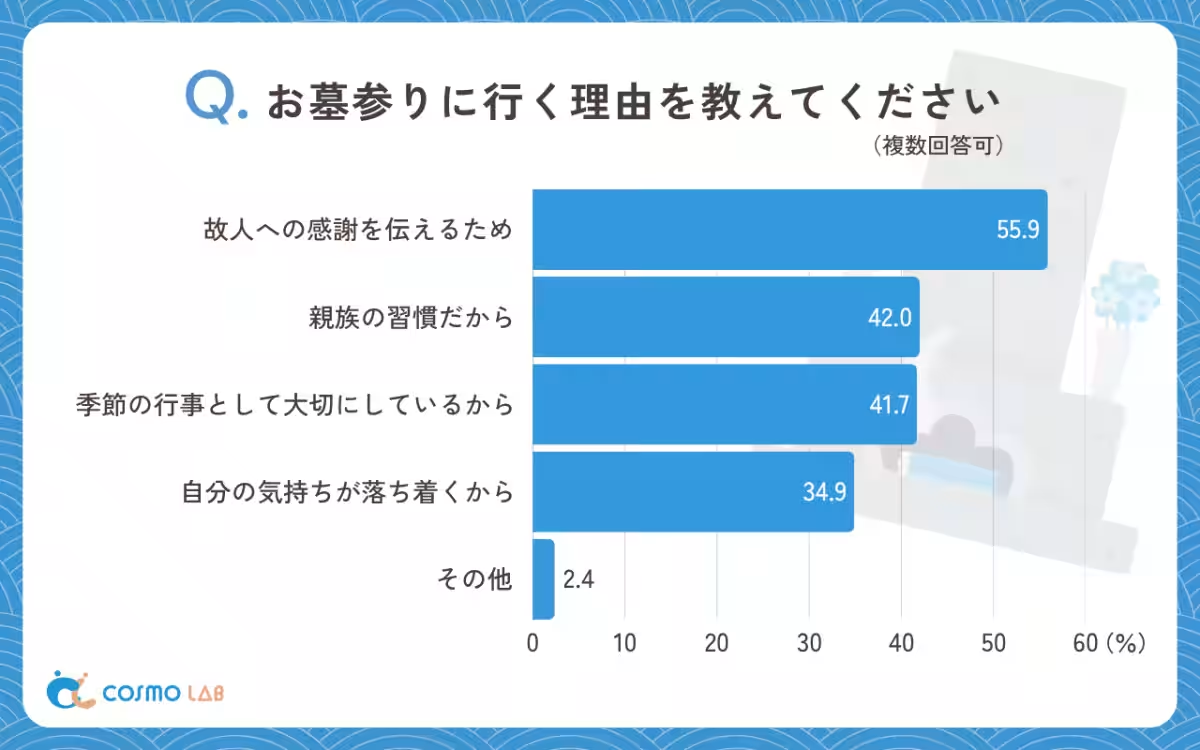
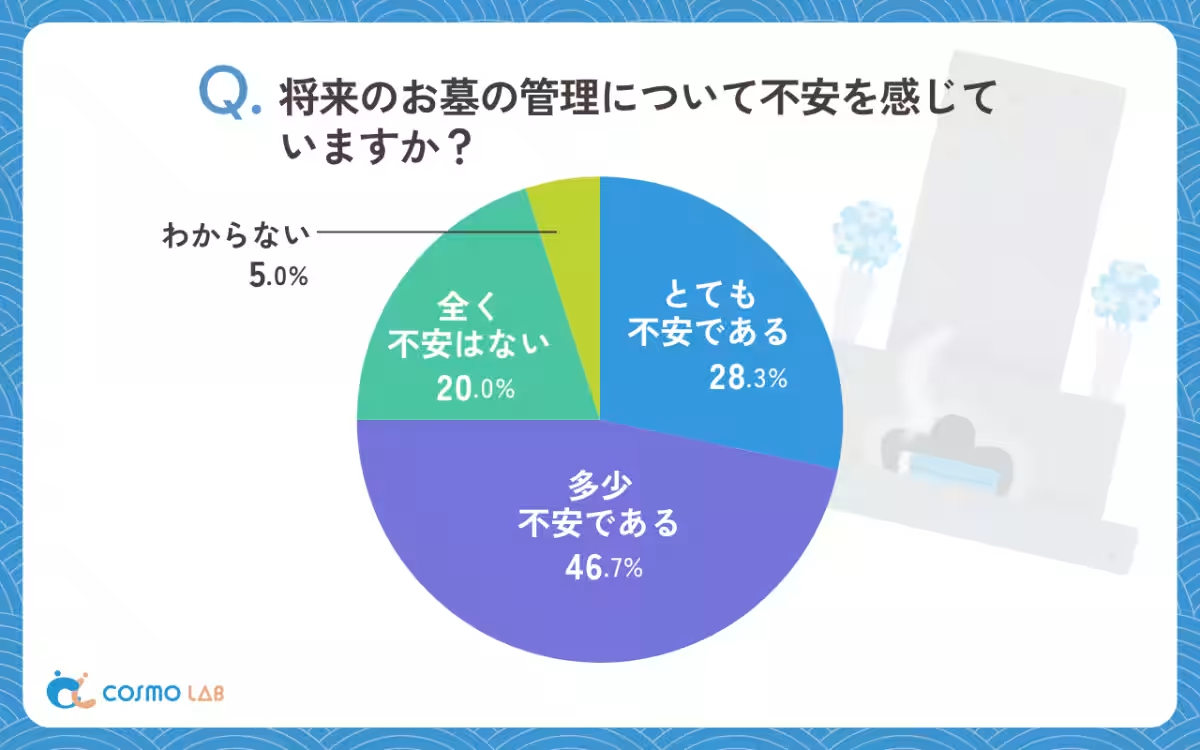
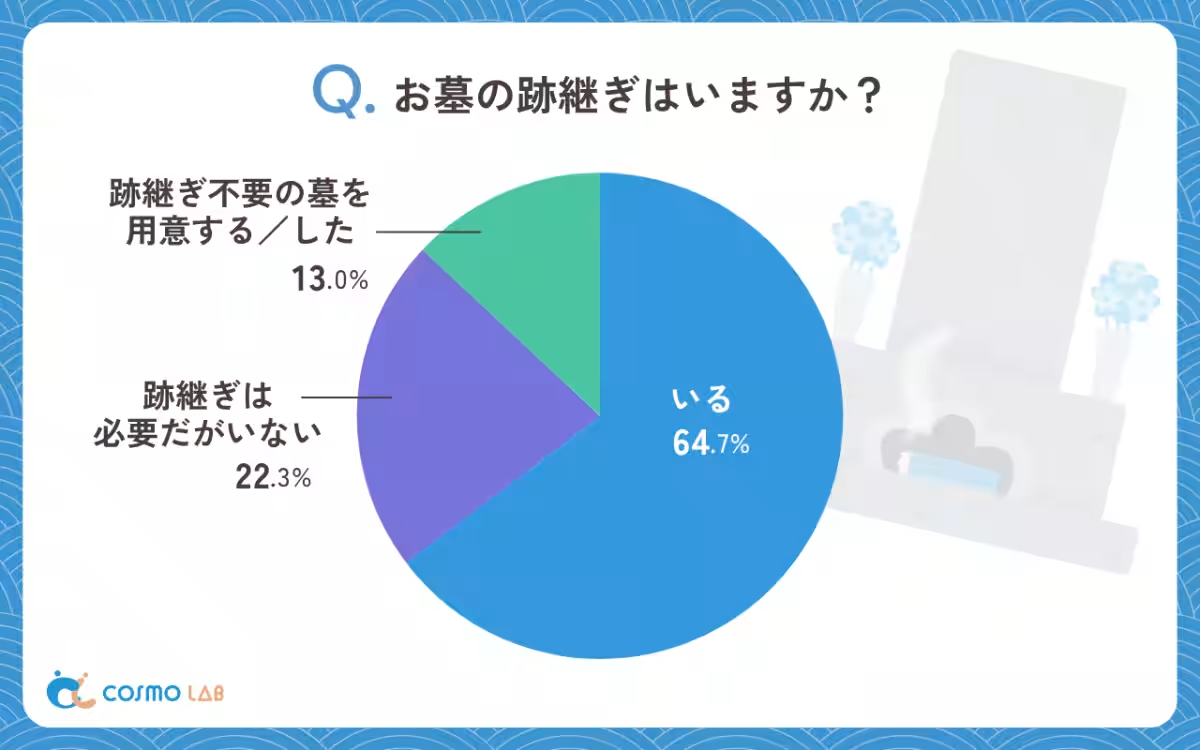
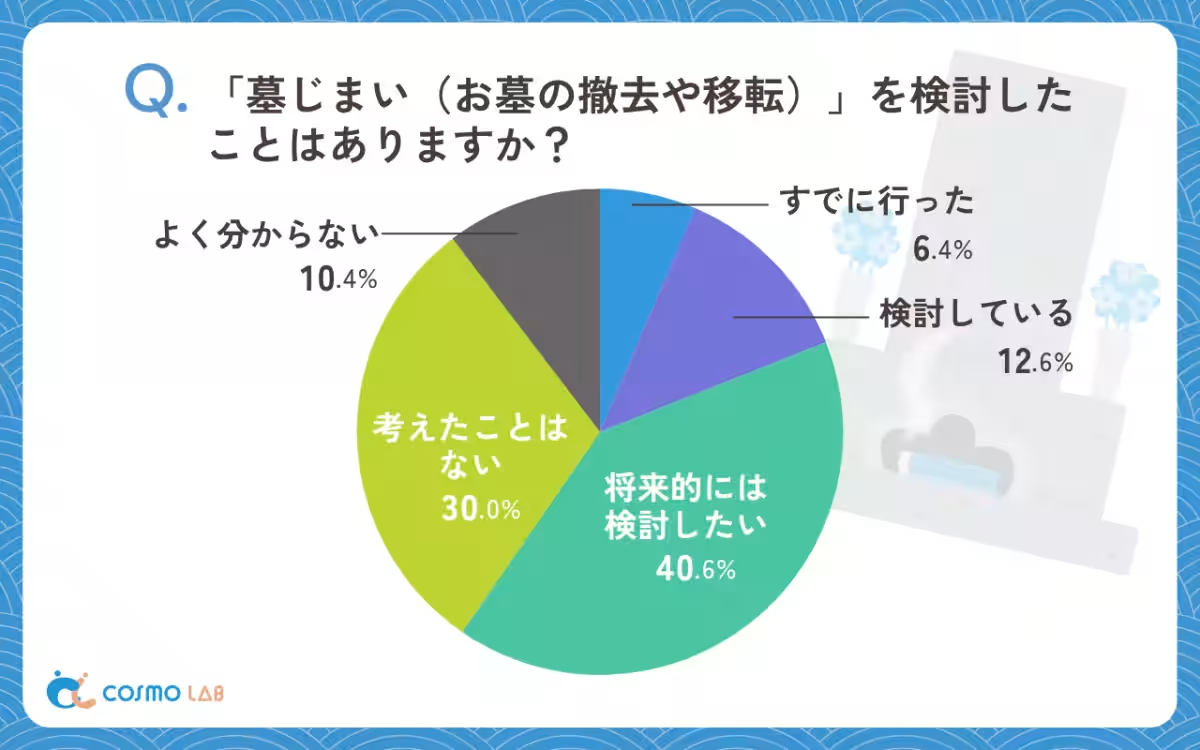
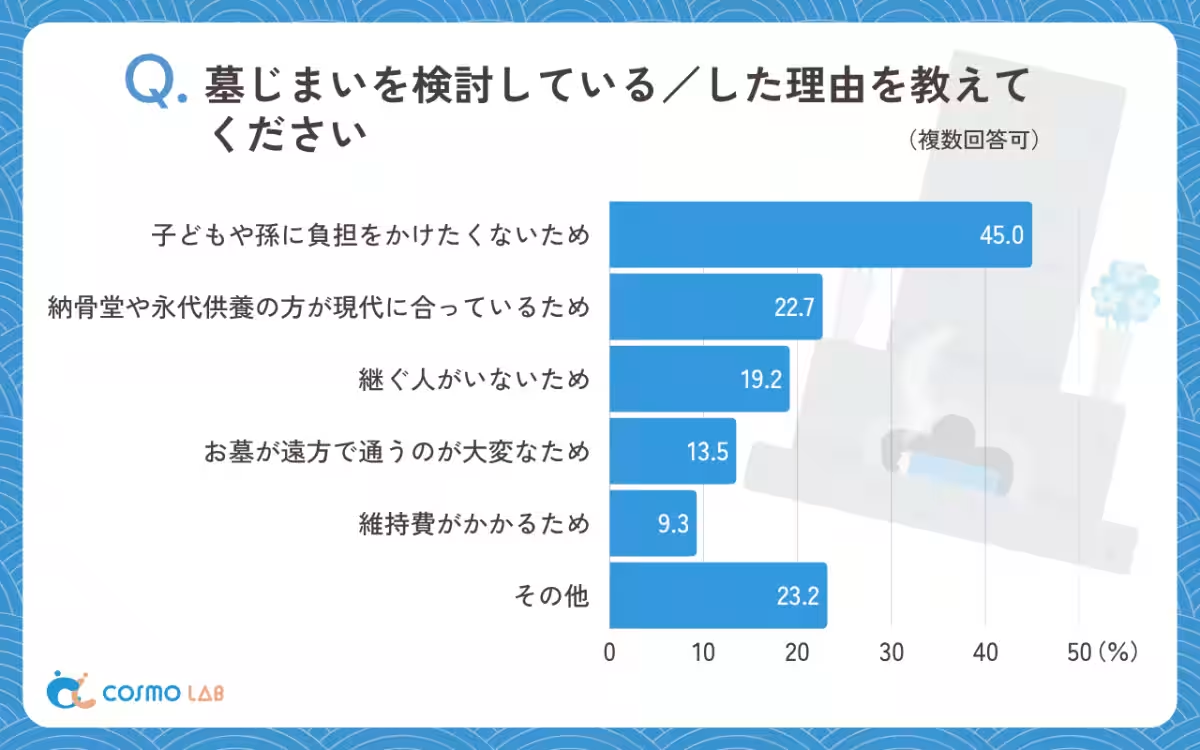
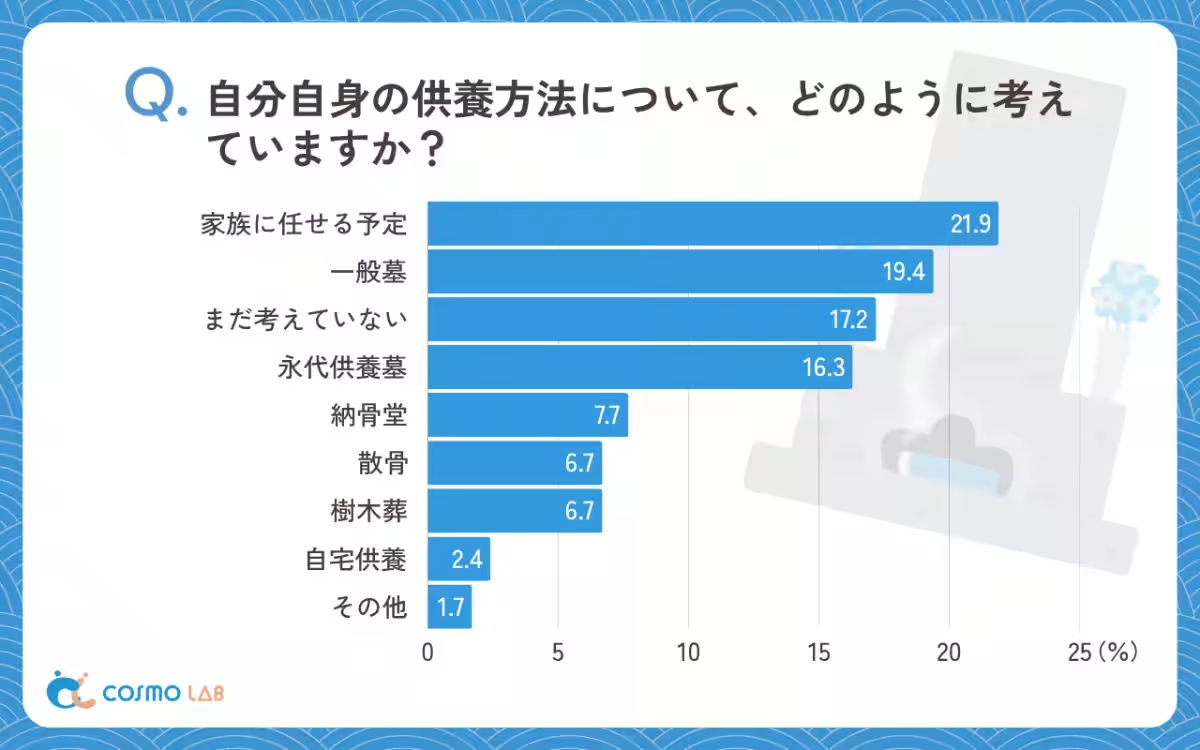
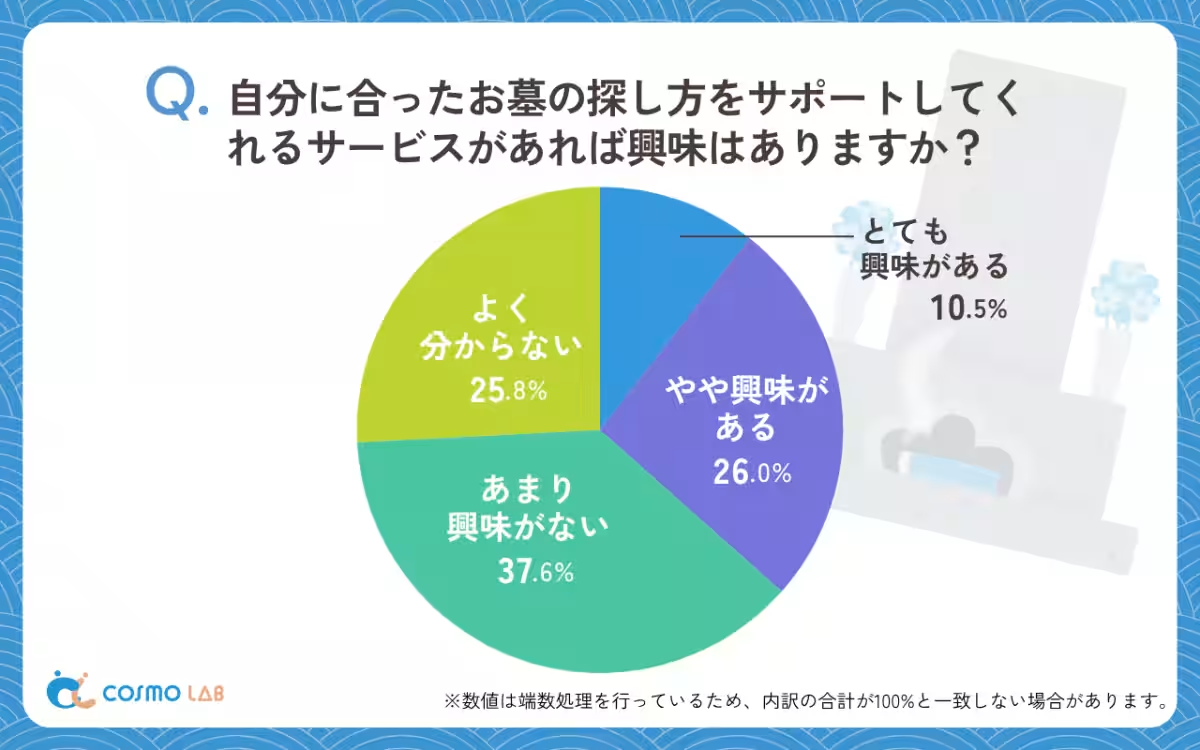
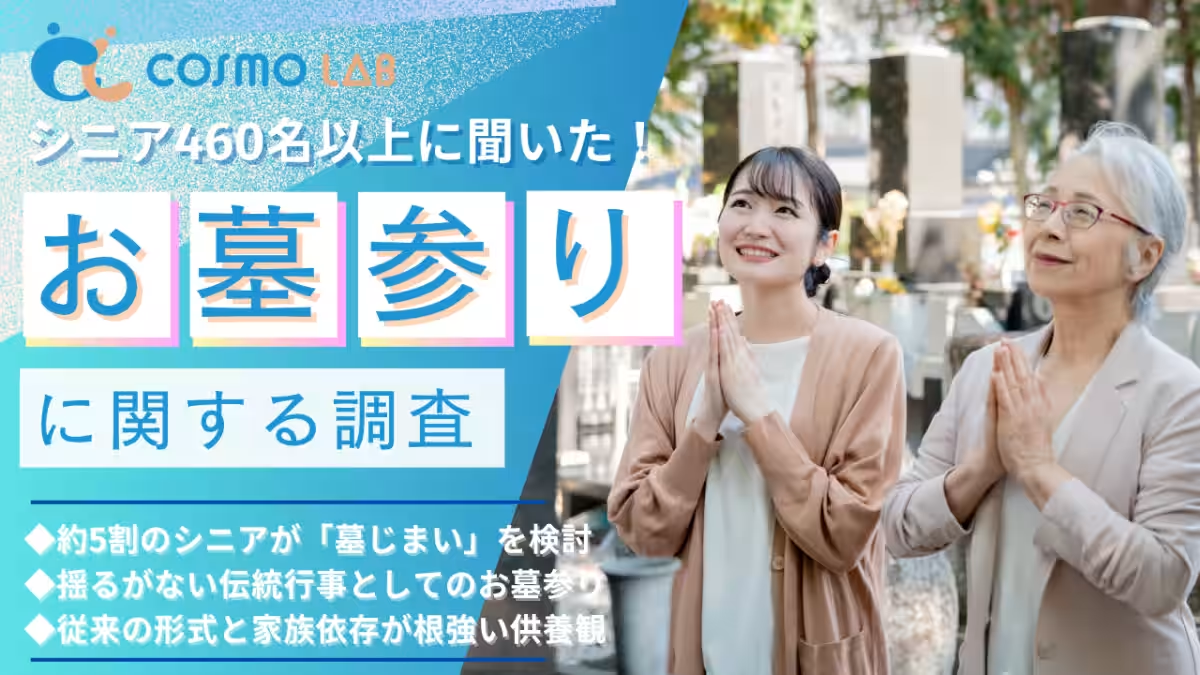
Topics People & Culture)








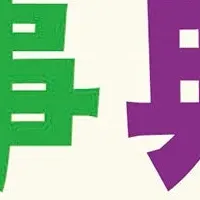
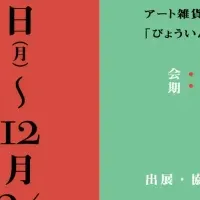
【About Using Articles】
You can freely use the title and article content by linking to the page where the article is posted.
※ Images cannot be used.
【About Links】
Links are free to use.